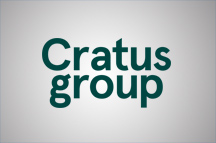The upcoming Hertfordshire County Council elections, which take place on 1 May 2025, mark an interesting moment for local government in the county. Set against the wider backdrop of the reorganisation of local government and the move towards elected Mayors across the English counties this is likely to be the final elections before sweeping changes to Hertfordshire’s governance structure come into effect.
Although Hertfordshire did not make it onto the Government’s Devolution Priority Programme (DPP), the County Council has responded to a national call for local government reorganisation proposals. However, a consensus around where the boundaries for new unitary authorities across Hertfordshire should be drawn remains elusive. The County Council favours a single unitary authority covering the whole of Hertfordshire, but nine out of the ten District and Borough Councils oppose this. Instead, councils have agreed to further explore two, three, and four-unitary authority models.
Proposals on the table include splitting the county into either two larger authorities (East and West Hertfordshire) or three (West, East South/Central) or four unitary authorities (East, West, South West, Central). There have also been some concerns about the viability of grouping areas like St Albans and Welwyn Hatfield into the same unitary authority in some of the three-unitary scenarios, given the significant differences in their socioeconomic demographics.
Importantly, only the single unitary and two-unitary options meet the Government’s directive that any new unitaries must cover at least 500,000 residents. Final proposals are due to be submitted by 28 November 2025, with reorganisation expected to take effect from 2028.
These elections look destined to be a contest between the Conservatives and the Liberal Democrats around which Party can emerge as the largest Party. The Conservatives will be hoping to make gains from the Liberal Democrats in parts of Three Rivers District (on the back of two recent District by-election victories) and from Labour in the two Borehamwood divisions in Hertsmere. The Liberal Democrats will be hopeful of increasing their presence in the divisions of Dacorum and East Hertfordshire where they are both in local government administrations. There are some opportunities for Labour to make gains from the Conservatives in Stevenage and Welwyn Hatfield where they both underperformed at the corresponding County elections in 2021 but have since made significant advances at a local and Parliamentary level. The Greens will be hopeful of increasing their representation especially in East Hertfordshire, where they are the largest Party at District level. Reform are not strong historically in Hertfordshire but given their national polling may see opportunities to win seats in Stevenage and Broxbourne. Overall, a Liberal Democrat-led coalition involving Labour and potentially the Greens looks a likely scenario.
The outcome of this election matters. A shift towards Liberal Democrat leadership at the County level would align the County Council more closely with many of the district and borough councils across Hertfordshire, potentially making decision-making more cohesive, particularly on devolution and local government reform. With planning and development frameworks likely to change, the election outcome could help shape the local planning environment for years to come.












